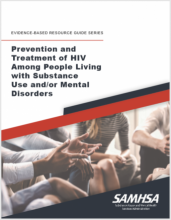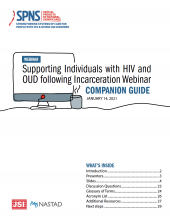
This resource describes how state health departments and other public health organizations can partner with people with HIV and/or who use(d) drugs in programmatic and policy making processes and evaluation.



This resource describes how state health departments and other public health organizations can partner with people with HIV and/or who use(d) drugs in programmatic and policy making processes and evaluation.
Articles in this supplement focus on the global opioid crisis, including coverage of harm reduction approaches, health justice promotion, and lessons learned.
This publication describes the recent trends of drug overdose deaths in the United States (U.S.) and the benefits of adopting harm reduction approaches.
The COVID-19 pandemic resulted in federal policy changes related to telehealth use that allowed states to maximize access to medications for opioid use disorder (MOUD) through telehealth.
Individuals who have HIV who also use drugs experience increased age-matched morbidity and mortality in comparison with those with HIV who do not use drugs.
This CDC report provides updated data related to HIV prevalence among people who inject drugs, documenting findings that underscore the need for low-barrier access to comprehensive and integrated needs-based syringe service programs for necessary prevention and
This package is a learning tool designed for health departments and community-based organizations newly offering syringe services programs (SSPs) with the purpose of indexing the materials needed for safer injection, what to offer at a syringe services program, and how to explain what materials a
A recent study published in Drug and Alcohol Dependence found evidence for racial/ethnic disparities in buprenorphine distribution across the United States.
Transgender people and communities, including nonbinary people, have specific needs within harm reduction programs.
This report analyzes the issues and trends underlying the syndemics of HIV, SUD, and viral hepatitis in West Virginia.